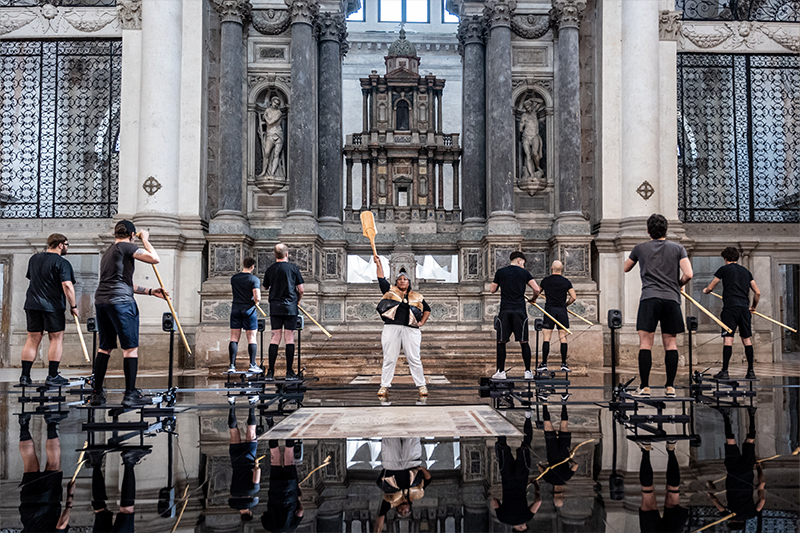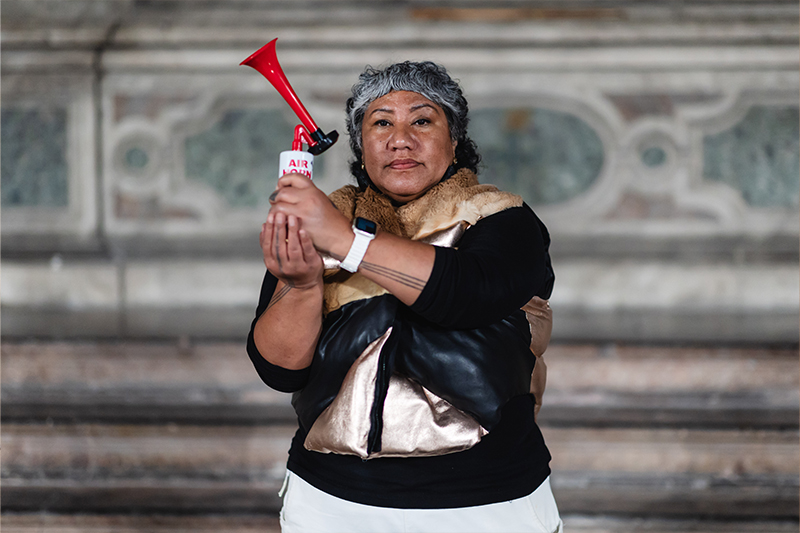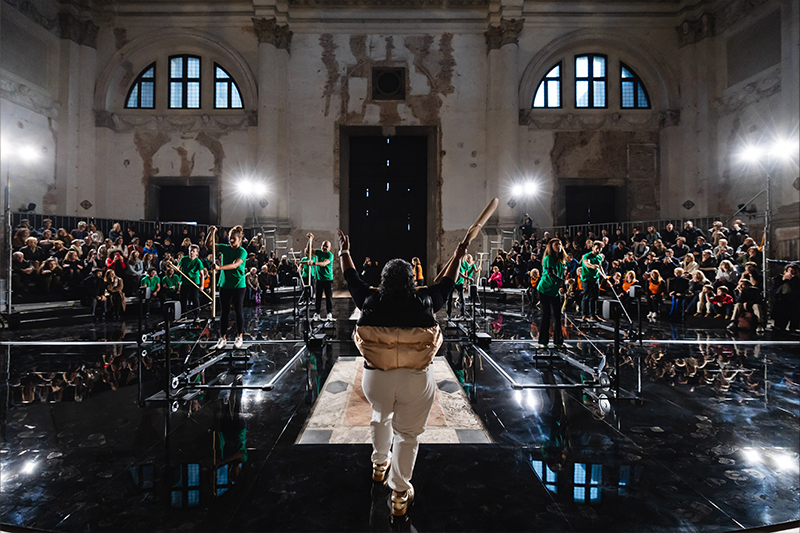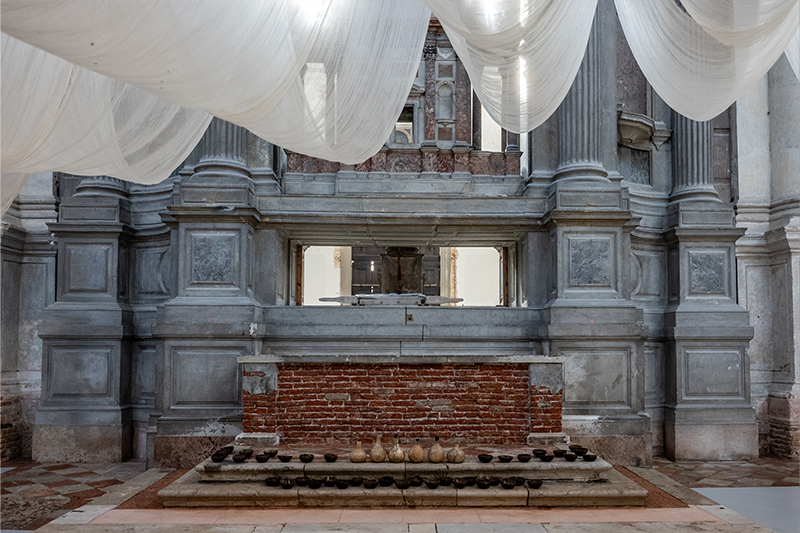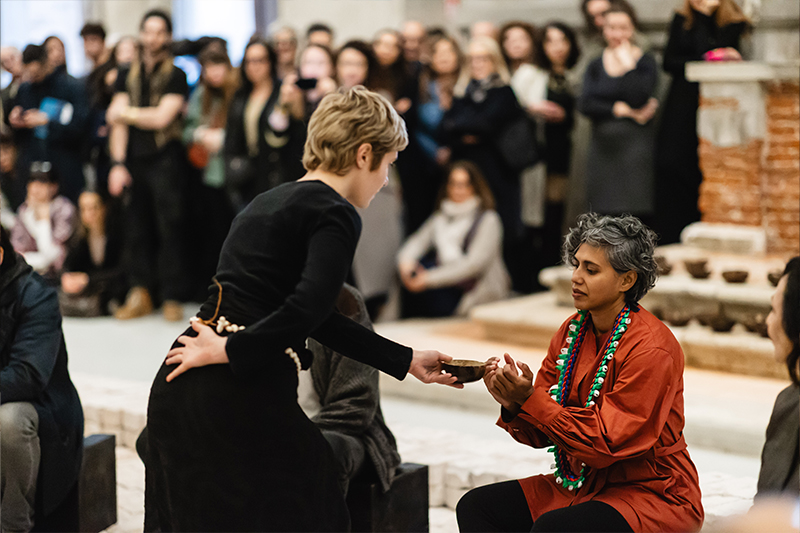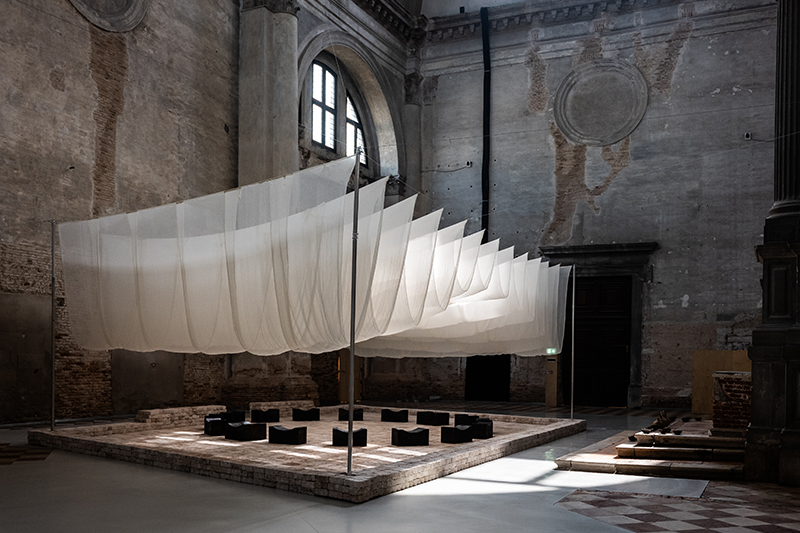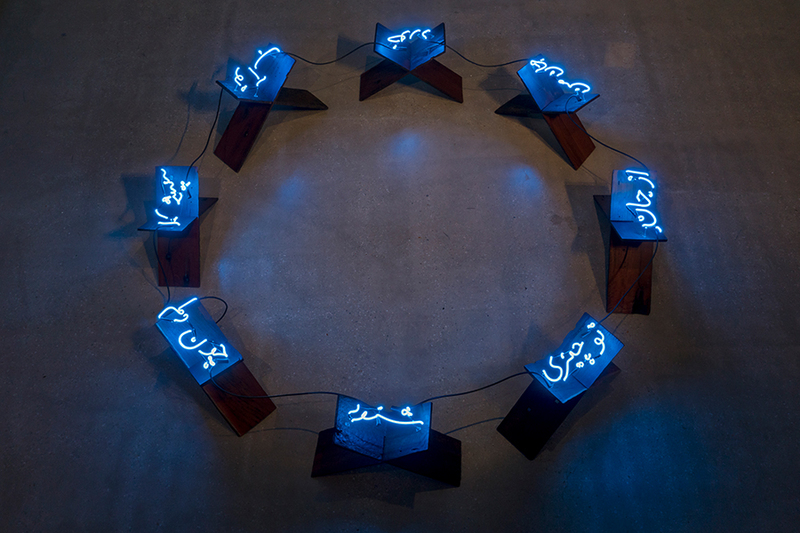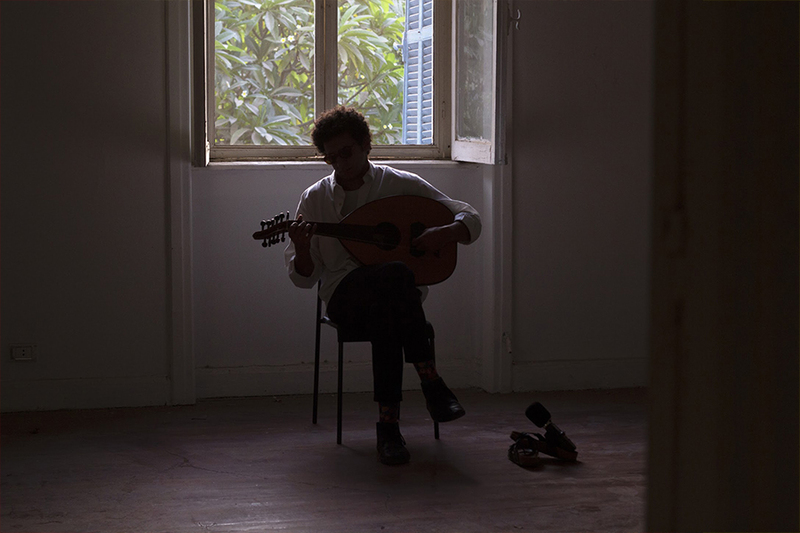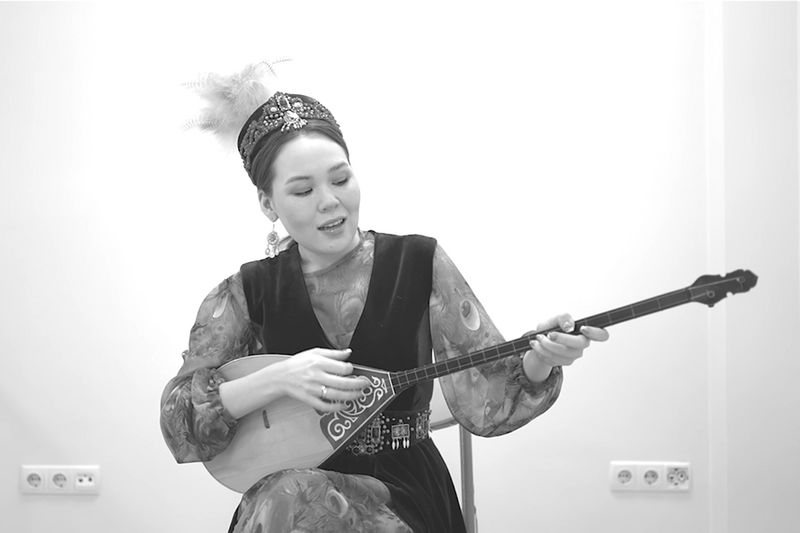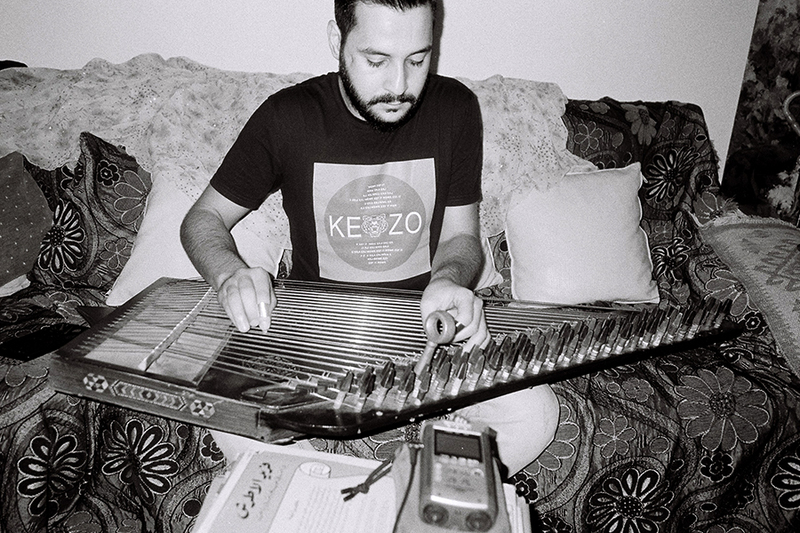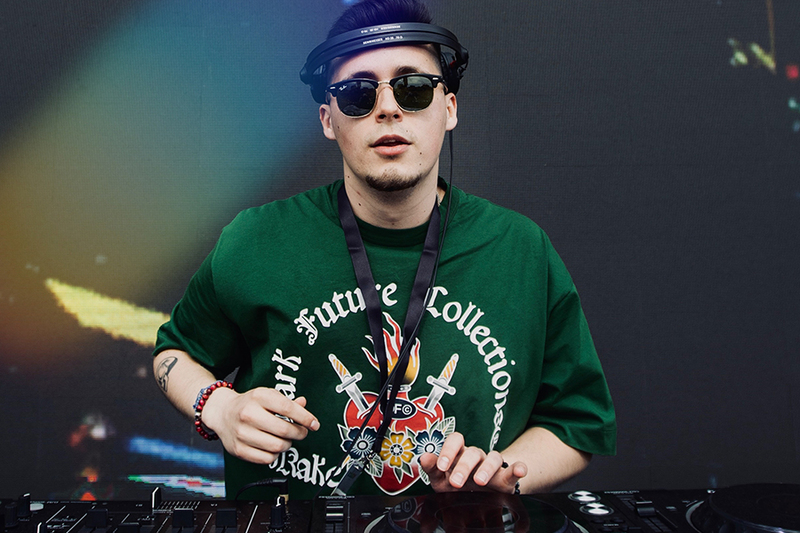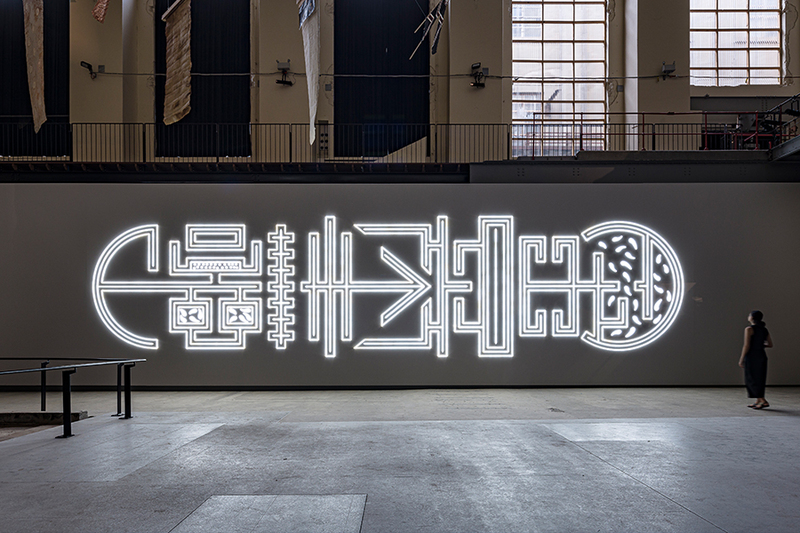
Photo: Marco Cappelletti
Markus Reymann, the co-director of TBA21, introduces Ocean Space, the institution’s experimental platform in Venice. Combining their profound personal love for the ocean with their political dedication to its preservation, the TBA21 team believes in promoting and conducting environmental activism through the arts—including the power of the sound enhanced by the Ocean Space’s unique venue.
The Sea and the Theater
My personal background is rooted in a deep connection to the ocean. I grew up in Germany, with a Scottish mother and a German father. My earliest memories are of the ocean, particularly the Scottish coast, which left a strong impression on me. This gray, moving mass has always been a part of my life, and I often say that my first real visual memory is of the sea.
I spent my teenage years as a competitive swimmer, training in pools up to twelve times a week. The water became a second home for me, and I felt very comfortable in it. Later on, I studied theater and acting, working as an actor for eleven years in various cities such as Hamburg, Munich, Potsdam, Basel, and Bremen. However, the repertory theater system in Germany, where you can play multiple roles in different plays each night and rehearse new ones in the morning, eventually became too exhausting. It drained my creative energy and left me questioning the boundaries of my creativity.
Towards TBA21
At some point, I had the opportunity to work with Walid Raad on a performance called “Scratching on Things I Could Disavow” commissioned by TBA21 for the Wiener Festwochen. This experience was transformative for me. Walid’s approach to art, which involved compressing political situations, philosophical thought, and political theory into storytelling and lecture performances, was incredibly inspiring. He had a way of blurring the lines between reality and fiction, creating complex and thought-provoking experiences. This was a light bulb moment for me, and I fell in love with contemporary art and its potential to create new forms of knowledge and experience.
TBA21 was founded in 2002 by Francesca Thyssen-Bornemisza. She was clear from the beginning that she wanted to work with living artists, staying close to the artistic process. Early on, they started commissioning works, with the first elaborate commission being Kutluğ Ataman's Küba. This work dealt with identity and the experiences of a Kurdish community on the outskirts of Istanbul. TBA21 showed the work on a barge, traveling up the Danube River in 2006 as the EU welcomed seven new countries. This project highlighted TBA21’s engagement with novel ways of bringing art to audiences and building global-local conversations.
My first experience with TBA21 was participating in the LAP seminar, held on a small island off the coast of Dubrovnik. These seminars were intimate gatherings where participants could speak freely and contribute to the thinking of the next year’s program. It was a magical experience, demonstrating the organization's openness, responsiveness, and commitment to self-reflection and critical engagement.

Photo: gerdastudio
Ocean Sounds in the Church
In 2011, Francesca decided to start a new project focused on the environment. We identified change as a core interest, exploring how to promote and trace the causes and effects of change. This led us to the ocean, an underexplored area in the art world. The ocean, covering 72% of our planet and being the habitat for 90% of all life, was a perfect fit for our transdisciplinary approach. We invited artists to lead investigations on a boat, thinking from and with the ocean, exploring its knowledge creation, governance, conservation, and education.
In 2013, we first imagined Ocean Space at the Chiesa di San Lorenzo, then still the Mexican Pavilion. A work by Mexican artist Ariel Guzik filled the space with incredible whale sounds and floating sculptures. The space, despite its deteriorated condition, revealed itself to be acoustically potent, originally built as a choir’s music box. In 2015, after the Mexican Ministry of Culture vacated, Francesca, and I embarked on transforming it into a cultural space integral to the Venetian scene, aligning with our belief that art and culture can drive environmental and societal transformation.
Ocean Space allowed us to demonstrate that artists should be central to knowledge creation and policy-making processes. Venice, historically reflective through art, symbolized the frontline of climate change with its sea level rise. We aimed to rekindle a relationship with the lagoon, fostering care as a cultural practice. Our first exhibition featured Joan Jonas’s Moving Off the Land II, where visitors encountered whale sounds filling the space. In 2020, during the pandemic, three traditional Venetian singers closed our program, their acapella performance highlighting the space’s historical—and acoustic—significance.
Re-Stor(y)ing Oceania
During the UN Climate Change Conference (COP21) in Paris in 2015, we launched our first Academy program that led us to understand the urgent issues facing the ocean. We realized that creating exhibitions alone was not enough; we needed to engage in conservation, policy intervention, and legal advocacy.
We created a program called The Current, a curatorial fellowship program with three-year cycles. Curators lead these cycles, bringing together interdisciplinary teams to engage with communities and explore curatorial themes. Our first curator, Ute Meta Bauer, focused on collective bodies and ancestral knowledge systems. Tracing the ocean's governance, conservation, and education, we built deep relationships with Oceania, committing to long-term engagement and support.

Latai Taumoepeau, “Deep Communion Sung in Minor (ArchipelaGO, THIS IS NOT A DRILL),” 2024. Exhibition view of “Re-Stor(y)ing Oceania,” Ocean Space, Venice. Co-commissioned by TBA21–Academy and Artspace, and produced in partnership with OGR Torino.
Photo: Giacomo Cosua
Latai Taumoepeau, “THIS IS NOT A DRILL,” 2024. Durational performance part of the exhibition “Re-Stor(y)ing Oceania,” Ocean Space, Venice. Co-commissioned by TBA21–Academy and Artspace, and produced in partnership with OGR Torino.
Photo: Nicolò Miana
Latai Taumoepeau, “THIS IS NOT A DRILL,” 2024. Durational performance part of the exhibition “Re-Stor(y)ing Oceania,” Ocean Space, Venice. Co-commissioned by TBA21–Academy and Artspace, and produced in partnership with OGR Torino.
Photo: Nicolò Miana
Elisapeta Hinemoa Heta, “The Body of Wainuiātea,” 2024. Exhibition view of “Re-Stor(y)ing Oceania,” Ocean Space, Venice. Co-commissioned by TBA21–Academy and Artspace, and produced in partnership with OGR Torino.
Photo: Giacomo Cosua
Elisapeta Hinemoa Heta, “The Body of Wainuiātea,” 2024. Cerimonial performance part of the exhibition “Re-Stor(y)ing Oceania,” Ocean Space, Venice. Co-commissioned by TBA21–Academy and Artspace, and produced in partnership with OGR Torino.
Photo: Nicolò Miana
Elisapeta Hinemoa Heta, “The Body of Wainuiātea,” 2024. Exhibition view of “Re-Stor(y)ing Oceania,” Ocean Space, Venice. Co-commissioned by TBA21–Academy and Artspace, and produced in partnership with OGR Torino.
Photo: Giacomo Cosua
Our current project, Re-Stor(y)ing Oceania (running from March 23th until October 13th, 2024), is curated by Bougainville-born artist Taloi Havini, whose work on coral spawning ceremonies deeply impressed us. Together, we commissioned new works from Latai Taumoepeau and Elisapeta Hinemoa Heta, focusing on deep-sea mining, an impending environmental disaster. Latai Taumoepeau uses faivā (performing art) grounded in Tongan philosophies of relational vā (space) and tā (time), giving Pacific islanders a voice on the issue in her new work Deep Communion Sung in Minor (archipelaGO, THIS IS NOT A DRILL). Wāhine architect Elisapeta Heta presented a new multi-sensory installation, The Body of Wainuiātea, embodying ritual and ceremony guided by the Māori concept of tikanga from her ancestral lands of Aotearoa New Zealand, alongside those from across the Te Moana-nui-a-kiwa, as Māori call the Pacific Ocean. This exhibition brings together our long-term research, relationships, and commitment to Oceania, highlighting the urgent need for environmental protection and cultural exchange.
The Future
Next year's exhibition will conclude our current fellowship program focused on the Caribbean, curated by Yina Jiménez Suriel from the Dominican Republic. It will feature two new commissions that we’ll announce separately. The three-year cycle has been examining emancipatory practices in the Caribbean by connecting to maroon communities—former slaves and Indigenous peoples who formed new, autonomous societies.
We will continue our food program and create spaces for transdisciplinary exchange, becoming more active in applied ecosystem restoration. It is crucial to make these practices cultural through a space like Ocean Space, and that is our plan moving forward.
